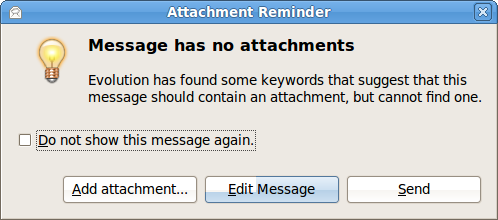This is a (belated) response to a post from Patsi Sells on The Whiteboard. She asked about safety and kaizen.
When first implementing some of the tools and mechanics of the TPS (especially in a manufacturing environment), many of the initial efforts seem to run afoul of the industrial safety professionals. My experience suggests a couple of basic causes.
- Safety countermeasures are not seen as necessarily directly contributing to production of the product. Thus, they are often lumped in to “not value added” or “waste” – at least by implication, if not directly, by over-enthusiastic kaizen event leaders.
- Safety professionals can be stuck on specific countermeasures vs. looking at the actual risk and identifying other possible countermeasures.
- Safety professionals are concerned (and rightly so) about repetitive motion injury. They perceive that takt driven standard work might increase the risk of this.
- There is overall a general lack of understanding of the difference between regulatory compliance and keeping people safe. While these two things overlap, neither is necessary nor sufficient to assure the other.
Let me start with the last point since it probably raised the most eyebrows.
An industrial safety program has two distinct and discrete objectives:
- To keep people from getting hurt.
- To comply with all laws and regulations
As I said above, while meeting both of these objectives are absolutely necessary, meeting the requirements of one does not guarantee meeting the requirements of the other. To put it more directly –
- It is possible to be fully compliant with all health, safety and environmental regulations and still have a workplace which is extremely dangerous.
- It is possible to have a very healthy, safe and environmentally friendly workplace and still run afoul of laws and regulations.
Thus, it is necessary to ensure that each of these things are discretely addressed in any successful program.
It is important for both kaizen and safety professionals to be aware of this. Some things are simply required by law, even if they are wasteful, and sometimes interpretation is up to the whim of a local inspector who might be having a bad day. Whatever the case, for each regulatory requirement there must be a specific, targeted countermeasure, just as there must be one for each physical risk. Sometimes these things overlap, but sometimes they do not, and that is the key point here.
I will digress for a paragraph and make this point however: If you have the basics of workplace organization in place, you make a much better first impression on a health and safety inspector than if the place is a mess. If your fire department sees the fire extinguishers are all where they should be and up to date, access aisles and evacuation doors clear, etc. he is more biased toward the assumption that you have your basic act together than if the place is a mess. Everyone has some violations, but when they are blatant, simple things it starts you off with a bad impression, and inspectors usually start digging.
Moving beyond simple regulatory compliance, the objectives of “lean manufacturing” and safety are 100% congruent. Ethically it is never acceptable to knowingly put people in harm’s way for the sake of production. At a more pragmatic level, a hazardous workplace will adversely affect quality, production, cost, delivery and morale. I will not descend to the level of cost-justifying safety simply because it isn’t necessary. But it is equally true that an unsafe workplace has higher costs than a safe one.
The good news is that the kaizen process is incredibly effective at dealing with safety hazards.
Moving up on the above list, one of the biggest places where the safety professionals can help smooth out the work is with their expertise in ergonomics.
What the kaizen people should take a little time to understand is this: Motions with poor ergonomics nearly always take longer than motions with good ergonomics. To put it a little more clearly: Ergonomic improvements are kaizen. Once a good team understands the difference between good and bad ergonomics, they can quickly see many small improvements which all accumulate.
By standardizing the method, we standardize the good ergonomics. Where there are no standard methods, the Team Members will each develop their own which may, or may not, be the safest way to do the job.
Standardizing the right motions reduces the chance of repetitive motion injury. And paying attention to why unusual motions are necessary comes back to reducing variation and overload (muri, mura) in the workplace.
At the next level up, standard work is your best friend.
To develop any process you first take a good look and specify exactly what result you expect to achieve.
Define a defect-free outcome.
Part of that definition is “perfectly safe.” No one is going to argue with this. Of course you want a process that is perfectly safe, and produces a defect free outcome. Who wants the opposite? But until “defect free” and “perfectly safe” are explicitly defined or specified, there may be room for interpretation. Do this before working on the process steps.
Next define the work you believe will deliver a perfectly safe, defect-free outcome. Define the content, sequence and timing of the work.
Now you have a specification for content, sequence, timing and outcome – the four elements of activity that Steven Spear called out in “Decoding the DNA of the Toyota Production System .”
.”
Next – try it. Run the process exactly as you specified it. Verify two things:
- That the Team Member can perform the process as specified – there is nothing keeping him from doing it.
- That the Team Member actually does it that way and put in guides, controls, mistake-proofing where things go off track.
Check your results.
Was it perfectly safe? Did you see any risks? How are the ergonomics?
Adjust as necessary, then repeat.
Was the result defect free? How do you know? Is there a way for the Team Member (or an automatic step) to verify the result?
In practice, you are “trying it” and “checking the results” not just when you are developing the process, but every time it is done.
If a defect is produced at some point, then you know either:
- The process didn’t work as you expected.
- For some reason (which you don’t know yet), the Team Member did something different, or omitted a step.
Likewise, if the Team Member so much as skins a knuckle, you know the same things: The process is not perfectly safe or the process wasn’t (or couldn’t be) followed.
In most cases where the process was not followed you likely had a Team Member doing something in good faith to “get the job done.” This is the time to gently remind him that, when he can’t follow the process as designed, to please pull the andon and let someone know. Maybe you will have to make an exception to correct the current situation, but you HAVE to know if the process isn’t working or is unworkable.
Bottom line?
You get perfect safety exactly the same way you get perfect quality.
The methods and approach for getting it, and the methods and approach for correction and countermeasure are exactly the same.
Remember:
The right process produces the right result.
If you aren’t getting the result you want, then take a look at the process.


